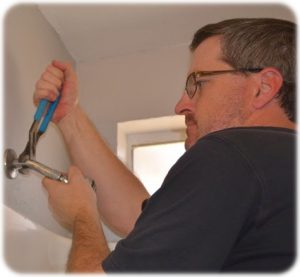 It doesn’t feel very nice to find yourself in the bathroom before taking a shower and then realize the shower head is dripping. Not only is it irritating but it can result in considerable loss of water, which will hit your wallet. Another side effect of such a leak is constant dampness in the bathroom, which, in its turn, can easily cause mold growth, and anybody knows what impact on health it has.
It doesn’t feel very nice to find yourself in the bathroom before taking a shower and then realize the shower head is dripping. Not only is it irritating but it can result in considerable loss of water, which will hit your wallet. Another side effect of such a leak is constant dampness in the bathroom, which, in its turn, can easily cause mold growth, and anybody knows what impact on health it has.
You might think that the obvious solution will be to call a plumber and then have him fix the leaky shower head. However, it could be wiser to try and do it yourself. It’s not as difficult as it may seem, and, what’s even more important, your money could be spent far better.
What Causes the Shower Head Leak
First of all, let’s find out what has caused the leak. It wouldn’t be unusual for the shower head to be a little bit loose, thus causing the dripping – in this case, tightening the head by hand might be enough to solve your problem. The showerhead can also be corroded or clogged with lime and other mineral deposits. Although it may not be the case if you’re using a Moen shower head since they are resistant to corrosion. But even if it’s a different kind of showerhead, dripping can still be caused by the shower faucet sometimes, not the showerhead itself.. Perhaps, the faucet needs cleaning badly, or, maybe, some of its parts need a replacement.
How do I Fix a Leaky Shower Head?
So, how do you fix a leaky shower head? The first step is to make sure that the faucet is in the off position, just to be on the safe side. Don’t overdo it, though, being overzealous may cause even more damage. If the faucet is not loose but the water is still dripping, the following tips may help you fix the leak.
 Shut off the water supply to your shower completely.
Shut off the water supply to your shower completely.- Cover the tub or shower floor with a cloth to prevent the screws and other small details from falling into the drain. This simple step should also protect your bathtub and shower floor from being damaged.
- Take off the shower head after turning it anti-clockwise. If it is kept in place by screws, you’ll have to loosen them with a turn-screw.
- Now, you should clean the shower head from lime and other minerals, as well as corrosion. The easiest way to do it would be to soak the shower head in vinegar for a few hours, rub it with a toothbrush and, for the last step, remove the remaining bits from hard-to-reach places with a toothpick.
- Dry the shower head with a soft cloth or a towel.
- Put the showerhead back on and turn on the water for a few moments. It should wash away what has not been reached by the toothbrush.
If you’ve done all this, and the shower head is still leaking, then there’s something wrong with the faucet.





